How to 3D Print a House With Concrete *All3DP
Read the original article here
As the construction industry climbs out of the rut created by the COVID-19 pandemic, contractors are challenged to complete projects while protecting staff on-site, comply with government regulations, and manage supply chain interruptions. Today, more than ever, the industry sorely needs new innovations to catch up on lost time and cut costs, while not sacrificing quality.
Enter concrete 3D printing.
The technology has the potential to significantly disrupt the construction industry, according to market research firms, like Guidehouse Insights: “After years of R&D, the market is nearing a tipping point as companies are moving beyond pilots and demonstration projects. Considering current tight construction margins and labor shortages, 3D printing has the potential to revolutionize construction and unlock new markets to the industry, such as affordable homes.”

Unlike the use of robotics to improve productivity, safety, and quality in construction, 3D printing does not follow the conventional processes of laying bricks. “Layered construction” has become a completely new alternative technology in the construction industry. Plus, construction sites are changing. Instead of building work being carried out entirely on-site, structural modules are increasingly being pre-fabricated under industrial and automated conditions and assembled on-site, saving time and cost for better quality.
Here, we’ll take a look at how companies are 3D printing homes with concrete today, what 3D printers they’re using, and what materials make it possible. You’ll learn about the basics and benefits of concrete 3D printing, and what advantages it offers over traditional construction techniques.
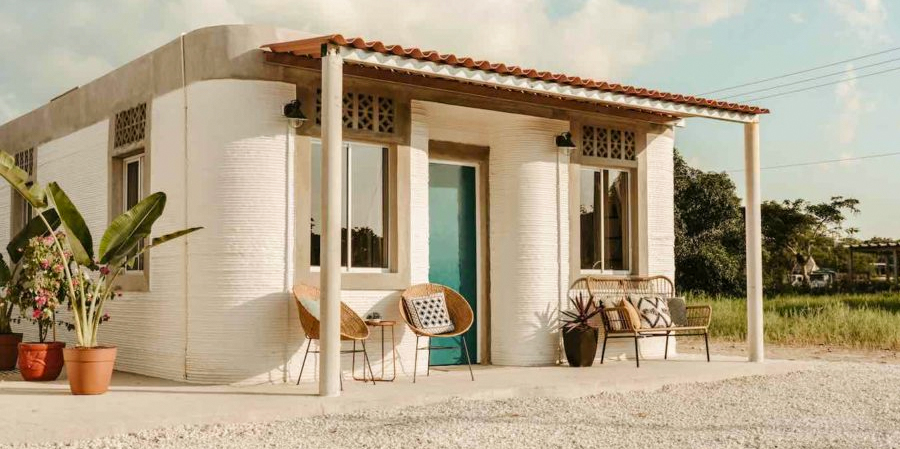
How to 3D Print With Concrete
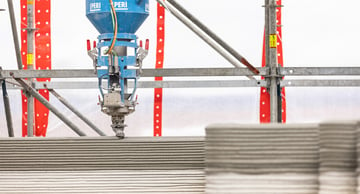
Concrete 3D printing uses extremely large-scale 3D printers, often measuring several meters in height and length to extrude a concrete from a nozzle. These machines generally come either as gantry or robotic arm systems.
Whatever the printer’s configuration, practically all of them continuously extrude a dough-like concrete material that’s laid down in layers to create the desired building element. Despite being called concrete 3D printing, the used material is not always concrete in the strictest definition of the word. Traditional concrete is usually not suitable for 3D printing, as it would only clog the printer nozzle and not adhere properly to the previous layers (see more in our section on materials). Many of the available materials today are unique and some are patented, making successful concrete 3D printing just as much about the material as it is about the printer. If you’re looking to get into 3D printing construction, study the materials carefully to pick one that is suitable for your application.

Advantages of 3D Printing Concrete
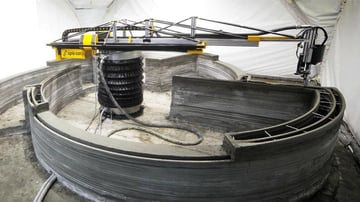
Concrete 3D printing for construction has advance rapidly over the past five years, with innovation in robotics, material science, and software, according to Guidehouse Insights, research. But why is that? What does it offer in comparison to traditional building methods?
Simply put, 3D printing has the potential to upend construction in terms of speed, cost-efficiency, and productivity. That’s not empty hyperbole, either – professional, high-profile companies that have tried the technology agree.
“We believe that this new technology has enormous potential for the future, and we want to help shape that future,” says Sebastian Rupp, managing director at German construction firm Michael Rupp Bauunternehmung, explaining why they chose 3D printed concrete. The company teamed up with PERI in late 2020 to build the first fully habitable 3D printed apartment building in Germany.

The potential of concrete 3D printing shows in printing companies’ results as well. COBOD, a Danish concrete 3D printing firm, reported its profits grew by 100% in 2020, and in the first three months of 2021, it had 200% more orders than in the entire previous year. The 3D printing construction market should reach a value of $1.5 billion by 2027, according to the latest estimates.
It’s easy to see why construction firms would want to move over to 3D printing. It offers significant benefits to the companies, including:
- Lower materials consumption since wall structures can be topologically optimized and partially hollow
- Less waste, no need for large-scale concrete molds or formwork
- Faster building times when compared to laying bricks or concrete molding
- Greater degree of design freedom, able to produce geometries (curves, hollowness, etc.) traditional concrete molding can’t
- Higher productivity (it can print 24/7)
- Lower need for labor
Further developments in technology will push material consumption ever lower as better materials and printers will be able to create more complex and structurally sound geometries that aren’t currently possible.

However, the concrete 3D printing industry faces challenges it must overcome before widespread adoption is possible. These include:
- High initial investment cost
- Limitations in print size (mostly vertically)
- Limited selection of materials
- High technical expertise required to operate and maintain printers
- Surface finish of printed elements can be visually unappealing
Although 3D printing does cut the need for skilled labor, the workers that are needed must have a much higher degree of training and education. Additionally, tasks such as installing plumbing and electrical will continue to require human workers and they’ll need to adapt their processes to the new structures.
Despite the 3D printed homes and buildings making headlines today, concrete 3D printing as a market, is still in the developmental phase, but it is expected to enter the mainstream over the next 10 years, especially in countries facing labor shortages and lack of housing. Dubai, for example, is aiming to have a quarter of its buildings constructed using 3D printing by 2030. This initiative, according to the country’s Prime Minister and ruler, Sheikh Mohammed bin Rashid Al Maktoum, enhances the role of 3D printing technologies in saving construction costs by 50% – 70%, and labor costs by 50% – 80%, in addition to reducing the percentage of waste resulting from construction operations by up to 60%.
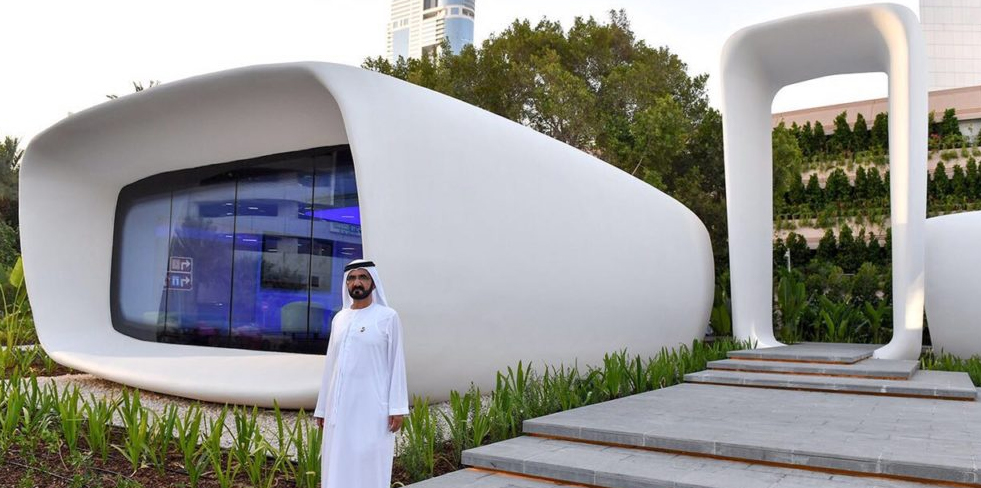
Best 3D Printed Concrete Projects
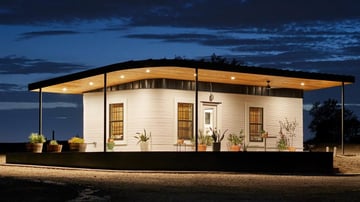
Concrete 3D printing might still be maturing, but that doesn’t mean the technology hasn’t been successfully put to use in a variety of projects. We’ve already mentioned a couple, like Dubai’s Office of the Future and Germany’s first 3D printed apartment building, but let’s take a closer look at more projects that highlight what 3D printed concrete materials are capable of.
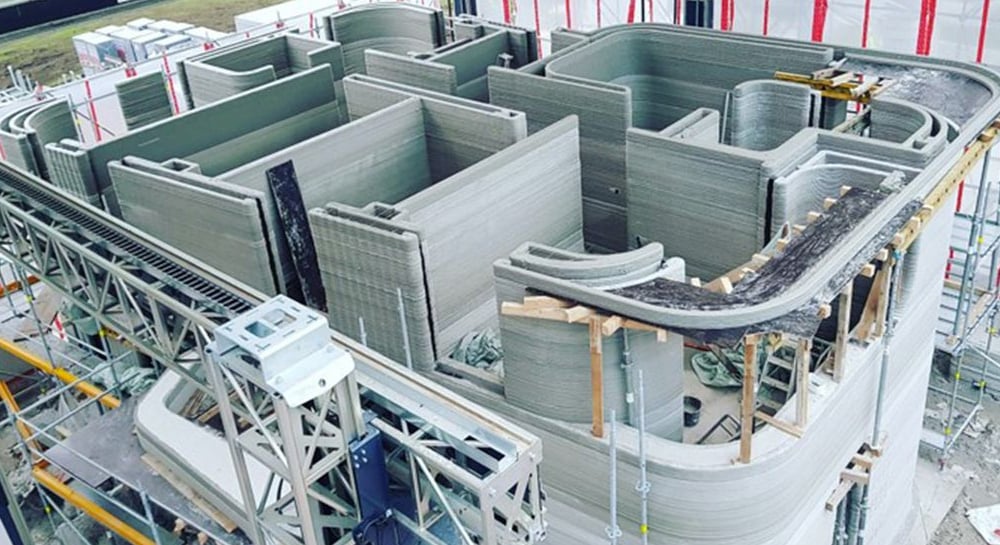
PERI: 2-Story House
In addition to the aforementioned apartment building, Peri also contributed to the construction of Germany’s first 3D printed residential building. Located in Beckum, Germany, the two-story house was constructed in September 2020, after the technology and materials had passed regulatory approval.
PERI used Danish manufacturer COBOD’s BOD2 printer and HeidelbergCement’s i.tech 3D material to print triple-skin cavity walls for the house. Only two operators printed the walls in a manner that considered the placement of water, electricity, and other connections. Thanks to BOD2’s printing process, some of the pipes and connections could be installed while the walls were still being printed.
The 160 m2 house, planned by Mense-Korte ingenieure+architekten, was completed in November 2020. PERI said it printed the house slower than the technology would’ve actually allowed in order to better evaluate the day-to-day operations and further cost reduction potential. Even then, the COBOD printer created 1 m2 of wall in only five minutes.

Project Milestone: 2-Bedroom Home
Project Milestone is a Dutch collaborative project between Eindhoven University of Technology, the city of Eindhoven, and other partners. After some setbacks in 2019, they completed the Netherlands’ first 3D printed house in early 2021.
The 3D printable concrete for the 94 m2 home – with a spacious living room and two bedrooms – was developed by construction firm Saint-Gobain Weber Beamix. The house’s 24 concrete elements were printed at the university’s facilities and transported to the construction site in Eindhoven’s Meerhoven district. They were placed on a foundation, and later received a roof and frames.
The collaborators intentionally chose an irregular, boulder-like shape for the home to push the limits of concrete 3D printing – and to make the house fit better in the natural environment.
“With the printing of insulated and self-supporting wall elements curved in three planes, we’ve taken important steps in this project in the further development of 3D concrete printing in construction,” said Bas Huysmans, CEO of Weber Benelux.
The boulder house’s happy new residents moved in on April 30. Project Milestone intends to construct four additional homes in the near future.
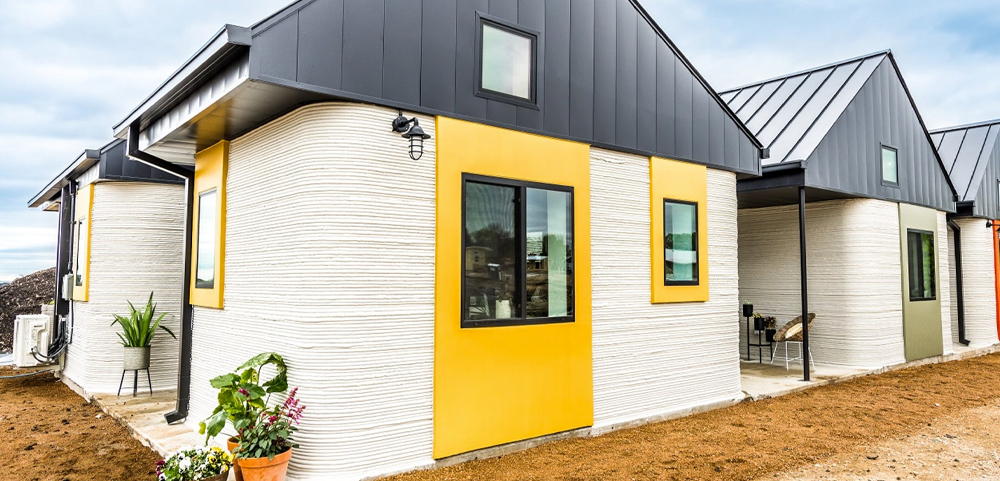
Icon: Safe Homes for the Homeless
3D printable concrete doesn’t only provide mechanical and financial benefits – it can address important social issues. Texas-based 3D printing firm Icon showcased this facet of the technology in March 2020 by delivering a series of seven 3D printed homes for the city of Austin’s homeless.
The 400-square-foot homes, created as part of a partnership between Icon and Mobile Loaves & Fishes, feature one bathroom and bedroom, a full kitchen, a living room, and a comfortable porch. Once the area’s development is complete, they’re poised to house 480 formerly homeless people – an estimated 40% of Austin’s homeless population.
The first residents moved into the homes in spring 2020. At the same time, they became the first people to live in 3D printed homes in the U.S.
The houses were printed with Icon’s Vulcan II printer using the company’s proprietary Lavacrete material. Designed by Logan Architecture, Icon printed full wall systems for three buildings at a time to boost construction speed and reduce costs even further than concrete 3D printing usually does.
“The promise of Icon’s 3D printing technology is really exciting, and what better place to start putting it to use than in one of the country’s most innovative neighborhoods designed to serve men and women who have experienced the trauma of homelessness,” says Mobile Loaves & Fishes CEO Alan Graham.
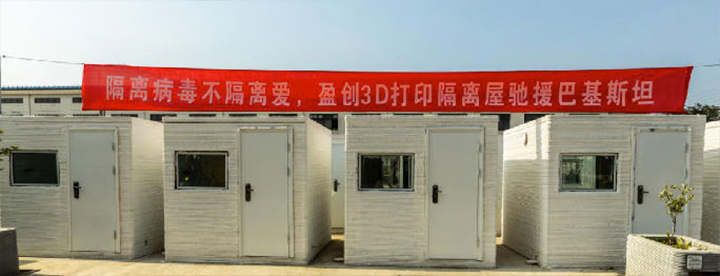
WinSun: Emergency Housing
When the COVID-19 pandemic broke out in early 2020, it quickly became clear that innovative solutions were needed, particularly in the developing areas of the world. Chinese Yingchuang Building Technique – also known as WinSun – stepped up in June 2020 to help Pakistan in tackling the disease.
WinSun Yingchuang 3D printed and donated 15 quarantine units that it calls “isolation houses” to Pakistan. Printed from WinSun’s proprietary cement-mix materials, the units are airtight to control the spread of the coronavirus while providing good thermal insulation for Pakistan’s hot, dry climate.
Each unit features a space for a bed, a desk, and a shower area with a sink. They come pre-installed with windows, doors, and electricity connections. The only installation required at the site was to hoist the units in place and attach water and electricity connections.
WinSun said the units were designed with future use in mind. Once the pandemic has been conquered, the isolation houses could be repurposed as hotel rooms, public restrooms, guard facilities, or emergency facilities or housing for disaster relief.
If there’s no further need for the units, the manufacturer said they can be returned and recycled into raw materials for future buildings.
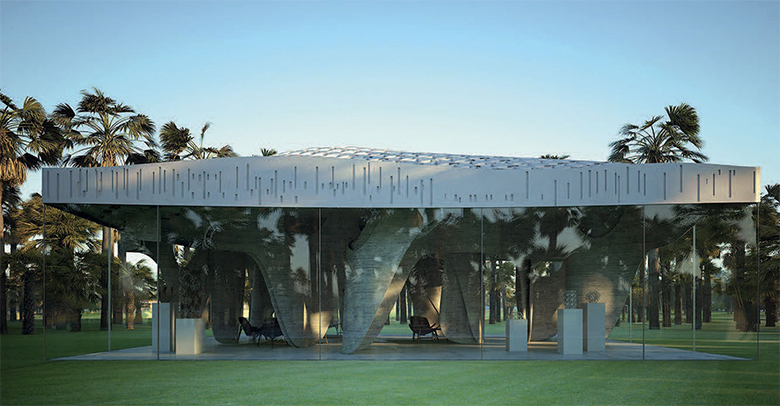
XtreeE
French additive manufacturing company XtreeE brings together art, architecture, nature, and 3D printing in it’s work, which spans homes, artificial reefs, and architectural columns.
It’s more current project (delayed by the pandemic) is for five individual 3D printed houses in Reims, France. Supported by the social landlord Plurial Novillia of the Action Logement group and designed with the architect Emmanuel Coste, the unit takes advantage of 3D printing by saving material and facilitating the integration of different functions in the walls. A six-meter robot will mount the curved high-performance concrete walls.
The process has multiple advantages: material savings (60%) compared to traditional walls and, consequently, less waste; a considerable time saving since the duration of the structural work is halved and the drying time is greatly reduced; but also less arduous work for workers and less risk of accidents. The printed walls will also be three times stronger in compression to a conventional wall.
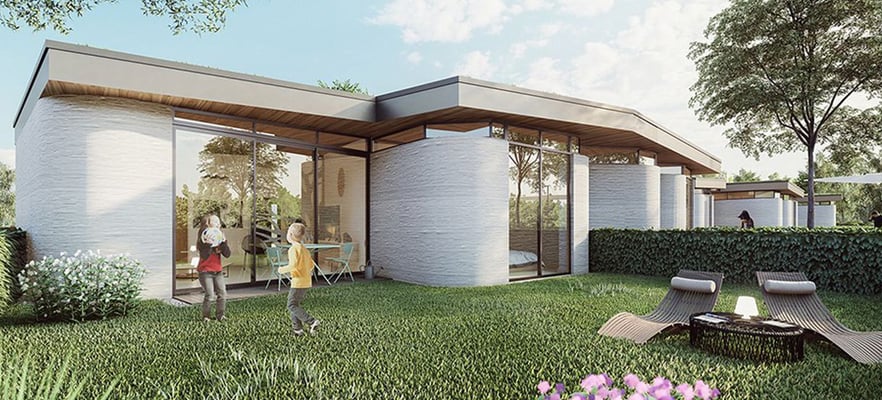
Where to Buy or Hire Concrete 3D Printers
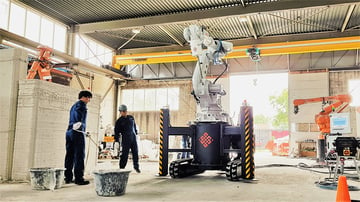
Concrete 3D Printing as a Service
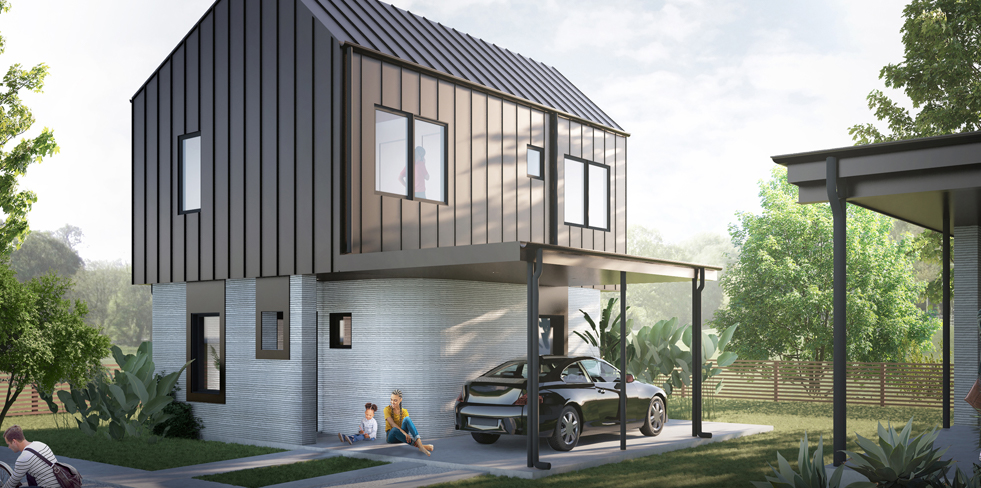
Icon is currently working with a handful of strategic partners to deliver big projects both domestically and internationally as it fine-tunes its technology. “In the future, we hope to see Icon’s technology stack of robotics, software, and advanced material in the hands of many developers, architects, builders and organizations,” the company says, but for now, it’s being very selective.
Peri is an EU-based global construction company that owns a stake in the concrete 3D printer manufacturer COBOD. The firm has partnered with engineering firms in several countries to implement 3D printing in construction.
Apis Cor is a US-based construction start-up and one of the first to develop specialized equipment for 3D printing in construction capable of printing whole buildings completely on-site.
CyBe is a Dutch company that provides a comprehensive 3D concrete printing experience that includes design and engineering, 3D printing, general contracting, and training.
SQ4D is a US-based construction company that prints full-size concrete houses faster, safer, and stronger, while dramatically reducing costs and producing homes that are more affordable, sustainable, and eco-friendly, it says.
Concrete 3D Printers For Sale
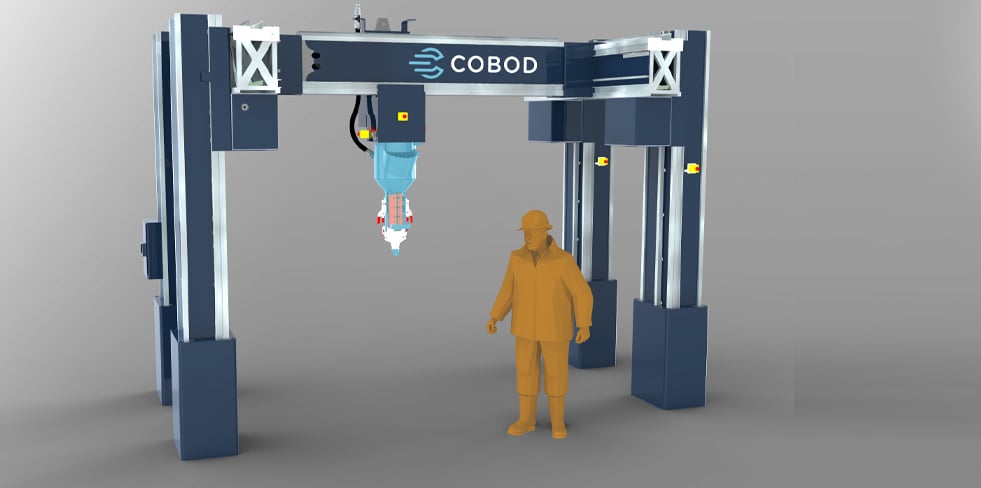
COBOD sells the BOD2 printers that consist of a gantry system with several modules. The number of modules is chosen to fit the specific construction project. The printers start at €180,000 for the smallest model and can cost more than €1 million for a printer capable of constructing a building more than 1.000 square meters on multiple floors.

WASP, based in Italy, sells two 3D concrete printers, the 3MT Concrete, and the Crane Wasp. The latter is conveniently packed in a shipping container with all the materials you’d need to build a house. The Starter Kit package is designed to build residences using local material, natural recycled, or standard building material. The necessary knowledge to set up the Starter Kit is supplied online. The house project together with its contents is open source and allows project managers, designers, engineers, architects, to enter the website and take or exchange contents.
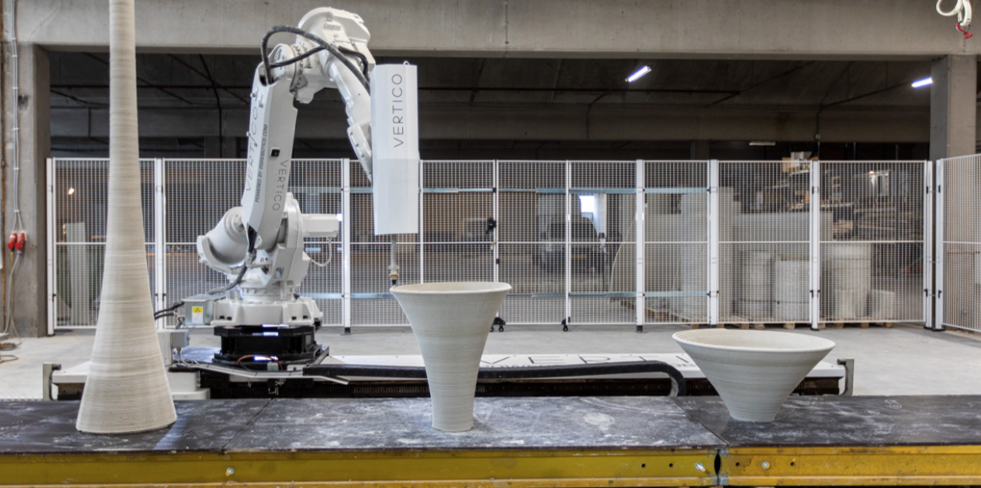
Vertico develops full concrete printing solutions, both with and without accelerated mix at the nozzle. Different robot configurations are possible, from the smallest EVA to the full track BETA solution.
MudBots is another start-up selling concrete 3D printers in a range of sizes. In addition to dwellings, you can use Mudbots to also make statues, monuments, bridges, and fountains.

Twente Additive Manufacturing is a Dutch printer manufacturer offering both gantry and robotic arm concrete 3D printers in a range of sizes. The largest, Leonardo model, retails for $1 million.
CyBe, as mentioned in the construction company entry above, offers both printers and construction. Its mobile robotic arm concrete 3D printer starts at $180,000 and its fixed version is €150.
Constructions-3D, a French company, offers a complete turnkey solution for concrete 3D printing on-site for half a million Euros. Transported by container, the kit includes the company’s software and one of the industry’s largest machines.
Uniqueness of 3D Printable Concrete
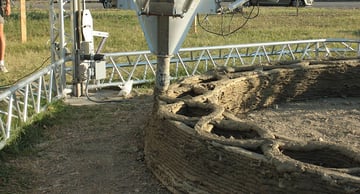
Most often, 3D printable concrete is actually a cement-based mixture of several materials, including super-plasticizers that remove water from the mix for faster drying and fibrous materials for improved strength. Providing similar functionality to concrete but with higher printability and sometimes better physical properties, the blends can be formulated for a specific purpose, such as printing walls for housing or for creating decorative architectural elements.
Most manufacturers create their own proprietary material blends, and as such, they’ve been optimized for their 3D printers (or for those of their immediate partners). Some examples of proprietary material blends include ICON’s Lavacrete and CyBe’s CyBe Mortar.
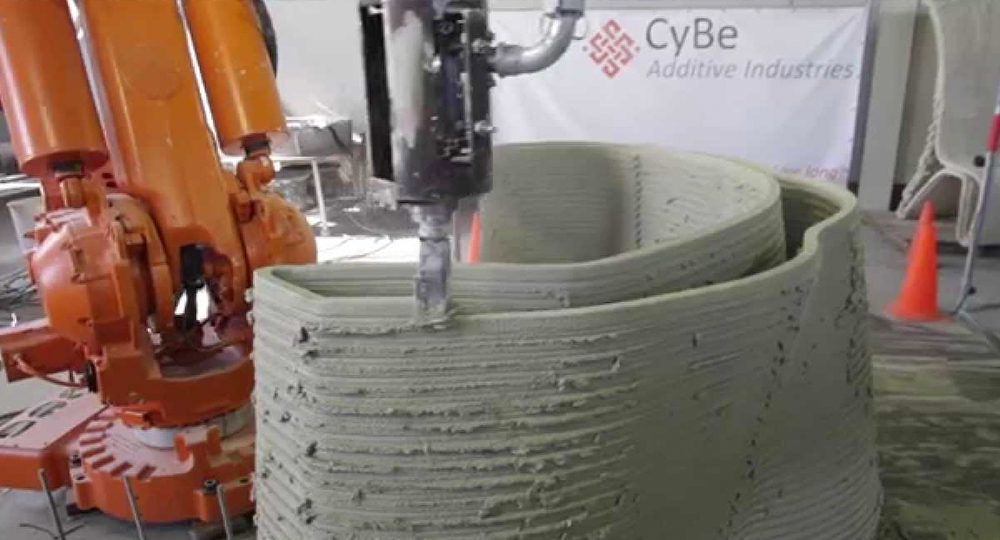
There are some basic features that set 3D printable concrete materials apart from one another. One factor is drying time. There are materials, such as those by construction 3D printer companies Mighty Buildings and ICON, that are cured using UV light. These kinds of materials cure almost instantly and can be printed horizontally without supports.
Other 3D printer manufacturers, such as WASP, have formulated their building materials to be sourced locally, such as local earth and clay. Local material cuts down on costs, making 3D printable concrete a far cheaper option compared to traditional concrete, especially in developing nations.
Although still in the research phase, 3D printing with recycled materials, such as waste concrete from demolished buildings, is also a major eco-friendly selling point of the technology.
| Company | Material | Printer |
| CyBe | CyBe Mortar | CyBe printers |
| HeidelbergCement | i.tech 3D | Any |
| Icon | Lavacrete | Icon Vulcan II |
| Sika | Sika Concrete | Sika Printers |
| LafargeHolcim | Tector 3D Build | Any |
| WinSun | Crazy Magic Stone | unknown |
Several companies have entered the 3D printable concrete market with their own products. As we’ve already mentioned, many of the materials are proprietary and designed to work with the specific company’s own printers.
That said, others make more universal materials that works with different printers, with some even formulating their materials blends separately for each project. Here we take a closer look at some of the leading material producers in the field and what they have to offer.
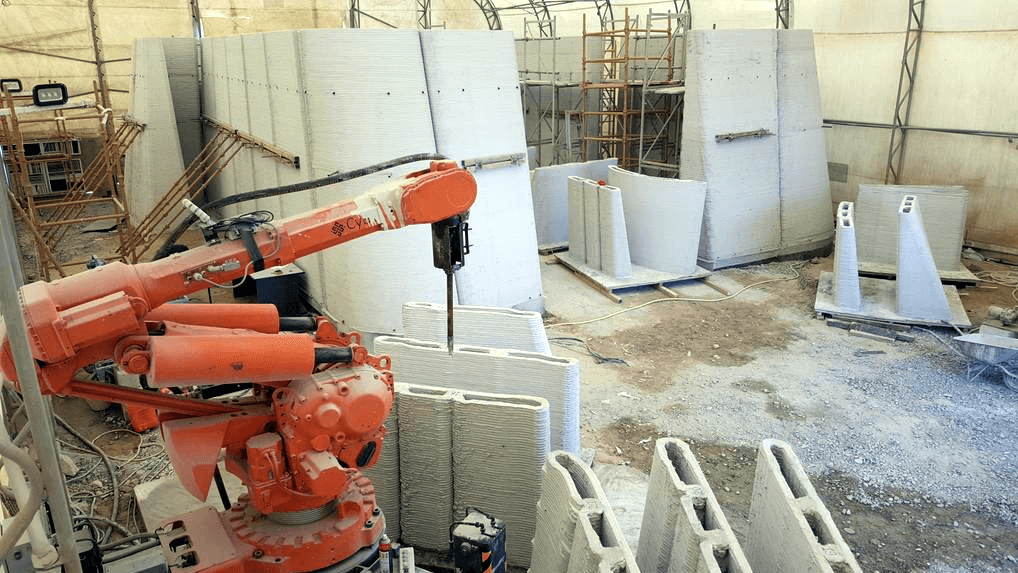
CyBe
The Dutch additive construction company CyBe has on offer its CyBe Mortar. The material has been developed specifically for concrete 3D printing with CyBe printers.
CyBe Mortar is a non-metallic, low-chloride, and low-sulfate material that’s suitable for all environments, the manufacturer says. It sets in only three minutes and achieves structural strength in an hour, providing high durability and little shrinkage.
The material can be used in architectural, structural, industrial, and design applications. CyBe says it will also partner with companies to produce CyBe Mortar from locally available materials, cutting shipping costs.
When used with CyBe printers, the material can be deposited at a maximum speed of 600mm/s at a minimum layer height of 1cm and a maximum of 5cm. The company says CyBe Mortar cuts CO2 emissions by 32% when compared to traditional Portland cement.

HeidelbergCement
German building material firm HeidelbergCement’s i.tech 3D has already cropped up with two projects we highlighted earlier. It was used in both Germany’s first 3D printed residential building and apartment building.
The i.tech 3D material was developed in Italy by HeidelbergCement’s subsidiary Italcementi. Formulated specifically for 3D printing, the versatile material isn’t tied to one particular machine and can be used with various types of 3D printers.
Its proprietary formulation contains a mix of mineral components and additives that provide high pumpability and good extrusion properties. The material forms a strong bond with previous layers due to the fresh-on-fresh printing it enables, says HeidelbergCement.
The i.tech 3D material is particularly suitable for printing straight or curved finished parts and components, in addition to weight-bearing elements. The company says i.tech 3D’s formulation can be altered for different printing processes and conditions, allowing for greater productivity and design freedom.
Due to its printer agnostic nature, i.tech 3D’s print speed and other technical features will depend on the particular project and printer. With the COBOD printer used by PERI, it was able to reach a print speed of 1m/s.
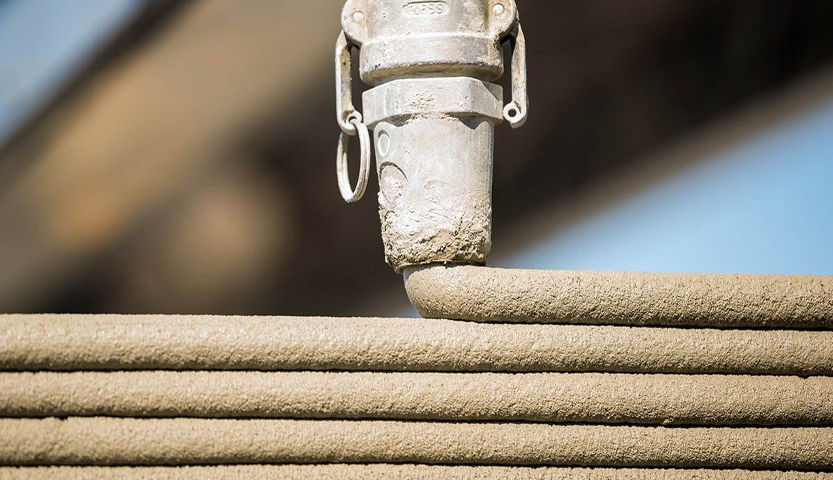
Icon
Like i.tech 3D, Icon’s Lavacrete has already been mentioned in this article. This proprietary Portland cement-based blend is designed to work specifically with Icon’s Vulcan II printer.
As the company says, the exact formulation is a closely guarded secret, but Lavacrete can be made locally from easily sourced raw materials. It has a compressive strength of 6,000 psi – above that of conventional building materials – and it can withstand harsh and extreme weather conditions.
Lavacrete doesn’t require the cladding, framing, and sheetrock used in traditional construction, which lowers costs. The material has been formulated to have a good thermal envelope, providing insulation and comfort for the home.
The specific blend of material and additives in Lavacrete can be customized for each project and location with Icon’s Magma delivery system. The Magma system automatically mixes Lavacrete, additives, and water and supplies the ready-to-print mix to the Vulcan printer at the specified temperature, humidity, and speed.
When used with the Vulcan, Lavacrete can be printed at a maximum speed of 7”/s.
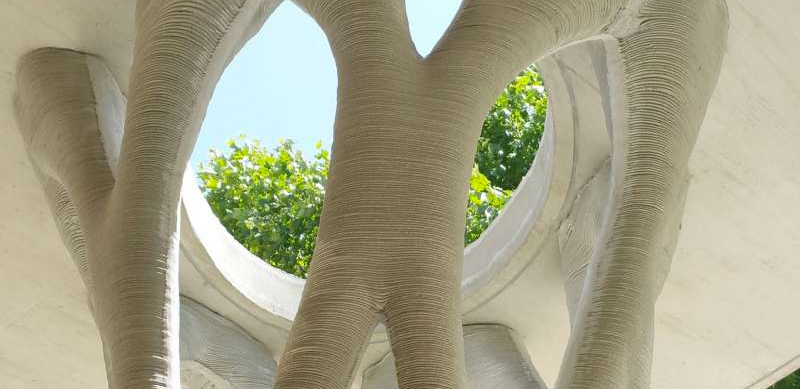
LafargeHolcim
Unlike the other companies highlighted here, Swiss LafargeHolcim doesn’t produce a single named material. Instead, the company partners with construction companies on various projects, providing individually formulated 3D printable concrete mixes.
For example, LafargeHolcim has provided a printable white cement mixture for XtreeE, which has been used in various architectural and art projects. The company is also working with COBOD and GE Energy to develop a tailor-made concrete mixture for 3D printing bases for wind turbines.
That said, in June 2020, LafargeHolcim released Tector 3D Build, its first dry mortar material range for 3D printing. Made from cementitious materials and natural hydraulic lime, the material is capable of reaching very high print speeds, the company says.
Tector 3D Build is suitable for both residential and infrastructure printing projects. Unlike some 3D printable cement materials, it can be printed vertically, allowing facades and decoration to be printed directly onto the wall.
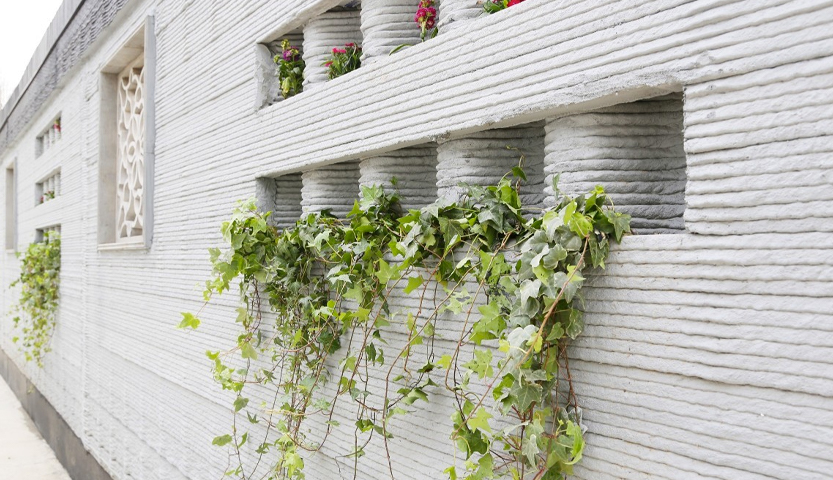
WinSun
China’s WinSun primarily serves the Asia-Pacific market – which is one of the fastest-growing regions for 3D printable concrete. The company produces several different materials that have been used in various projects throughout China and elsewhere.
WinSun’s Crazy Magic Stone (CMS) is an artificial stone material that is based on a modified cement mixture. The blend is further reinforced with enhanced glass fibers.
CMS provides a smooth finish that mimics natural stone colors and textures, while providing five to 10 times higher mechanical strength than natural stone. The company says that the material has been used in more than 100 projects to print interior and exterior walls, floors, and roofs.
WinSun also produces the Special Reinforced Concrete (SRC) materials, which was developed to overcome the limitations of the earlier glass-fiber-reinforced gypsum material. SRC can be implemented to create complex internal and external architectural elements and decorations.
The fiber-reinforced material provides high strength and durability. WinSun says the exact SRC mix can be customized to each project’s specific needs.